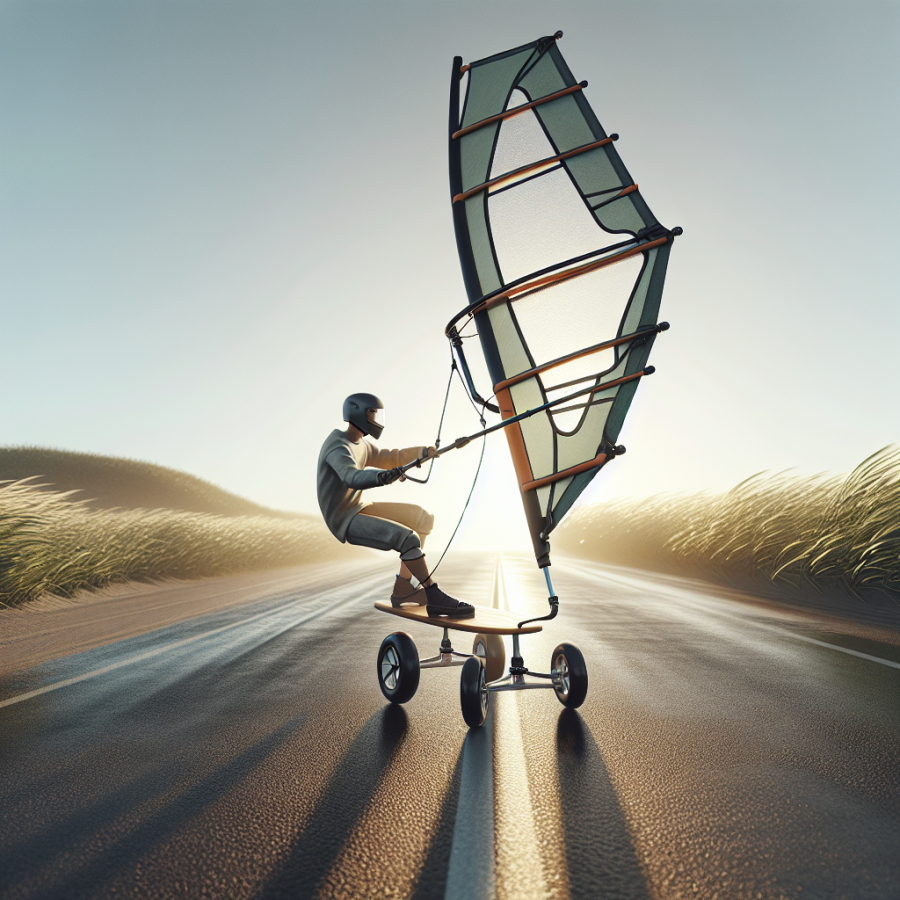Techniques and Equipment: Gearing Up for an Exhilarating Land Windsurfing Experience
When embarking on the adventure of land windsurfing, one must familiarize themselves with various techniques and ensure they have the right equipment to truly harness the power of the wind. This exhilarating form of windsurfing can be highly rewarding with proper preparation.
Mastering the art of balance is the cornerstone of land windsurfing. Unlike traditional water-based windsurfing, where buoyancy aids in stability, land windsurfing requires a firm stance and deft footwork on the board. Practicing balance exercises, such as yoga or balance board workouts, can significantly enhance your proficiency.
Turning techniques are also essential. The carve turn, akin to that in snowboarding, involves leaning into the turn and smoothly changing the direction while maintaining speed. Tack and jibe maneuvers will help you change direction relative to the wind while keeping up the momentum or shifting the sail from one side to the other.
Controlling the sail is another technique that must be mastered. In land windsurfing, controlling the power generated by the sail relies on your ability to angle it against the wind effectively. This skill can often be honed on smaller, more manageable rigs before graduating to larger sails which catch more wind and create greater speed.
Equipment is a vital aspect of land windsurfing, and having the right gear can make a tremendous difference in your experience. The board you select should match your skill level and the type of terrain you'll be surfacing. Beginners may opt for larger, more stable boards, while experienced land windsurfers might choose smaller, faster rigs.
The sail is another crucial component, usually made from durable, lightweight materials such as monofilm or laminates. The size of the sail is generally determined by your skill level and the wind conditions. Larger sails are best in lighter winds, whereas smaller sails are preferable in stronger winds.
Wheels are unique to land windsurfing and should be chosen based on the terrain. Larger, treaded tires are well-suited for rougher terrains with obstacles, while smaller, slicker tires are ideal for smooth surfaces where there's a need for speed and maneuverability.
In addition to the board, sail, and wheels, other critical equipment includes protective gear such as helmets, knee and elbow pads, and gloves to ensure your safety. You may also want to consider a wind meter to help gauge wind conditions and select the appropriate sail size.
Mastering the Art of Sailboarding on Terra Firma
Embarking upon the journey of land windsurfing, or 'sailboarding on terra firma,' requires an intricate blend of skill, balance, and a perceptive understanding of the wind's capricious nature. This terrestrial cousin to traditional water-based windsurfing offers enthusiasts the excitement of harnessing the wind without the need for waves or even a body of water. Mastering this sport involves a series of measures that can elevate a novice to a skillful land sailor.
To begin, one must first familiarize themselves with the equipment. Land sailboards, often known as landboards, are specifically designed for use on diverse terrain. They possess sturdy wheels suited for rolling across grass, dirt, or paved surfaces and a flexible, sturdy frame to withstand the dynamic forces exerted by the rider and the wind. Choosing the right board is crucial; beginners should opt for larger, more stable platforms while experienced riders might prefer smaller, more agile boards for intricate maneuvers.
Secondly, the sail plays a vital role. Unlike their waterborne counterparts, land sails might require more durability to cope with the occasional tumble. Sails come in various sizes, and selecting the correct size depends on factors like the rider’s weight, wind conditions, and individual proficiency. Generally, lighter winds necessitate larger sails to catch enough breeze for propulsion, while stronger winds demand smaller sails to maintain control.
Kite harnessing is another proficiency to be honed. Unlike water windsurfing, where the sail is directly connected to the board, land windsurfing often involves a kite, which is tethered to the rider through a harness. Learning to manipulate a power kite necessitates a nuanced skill set; proficiency in kite flying is essential as the kite's angle, height, and movement directly influence the speed and direction of the board.
Technique adjustment is crucial for varying conditions. On land, every surface presents a unique set of challenges; sand, grass, and asphalt all respond differently to the board's wheels and affect speed and traction. Riders must adapt their stance and movements to accommodate these variations. Furthermore, shifts in the wind require constant adjustments to sail tension and positioning to optimize propulsion and maneuverability.
Balance and core strength are foundational to adept land windsurfing. A strong core aids in managing the sail's push and maintaining equilibrium on the moving board. Regular strength and flexibility training can significantly enhance a rider’s stability and reduce the risk of injury when navigating unpredictable terrain or executing sharp turns and jumps.




